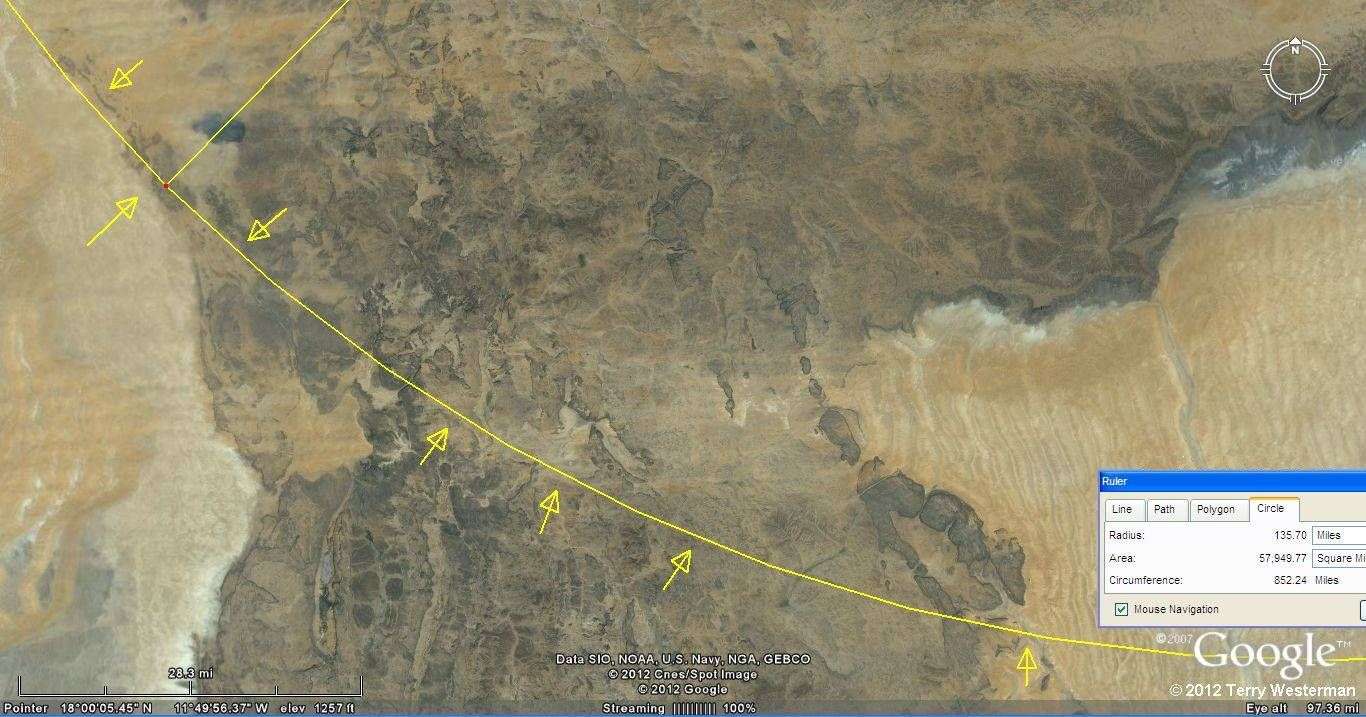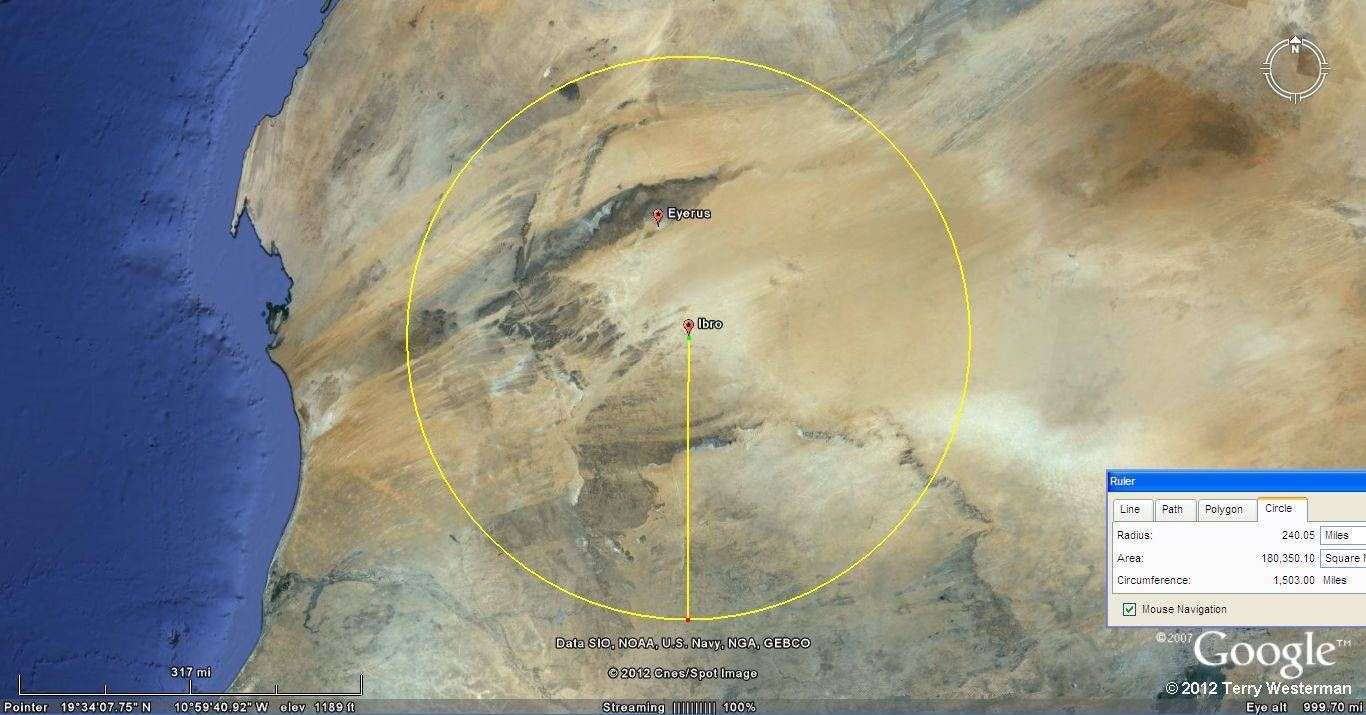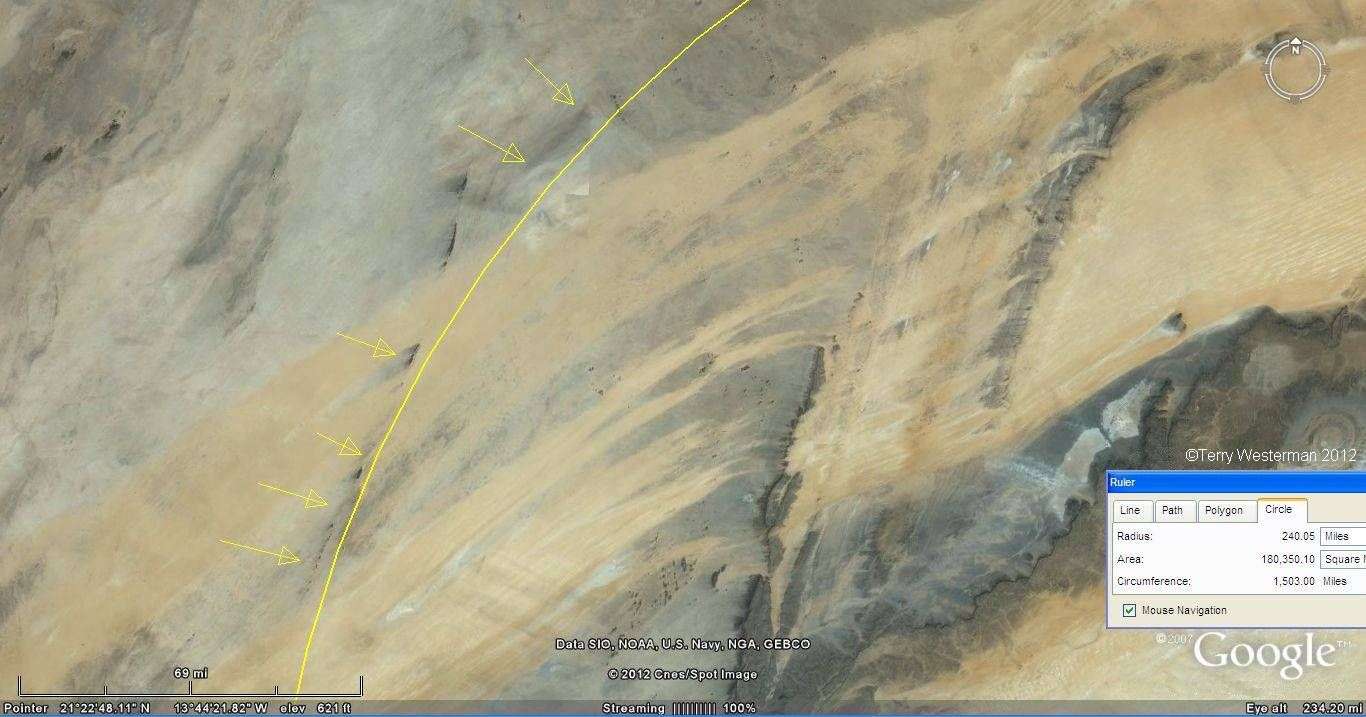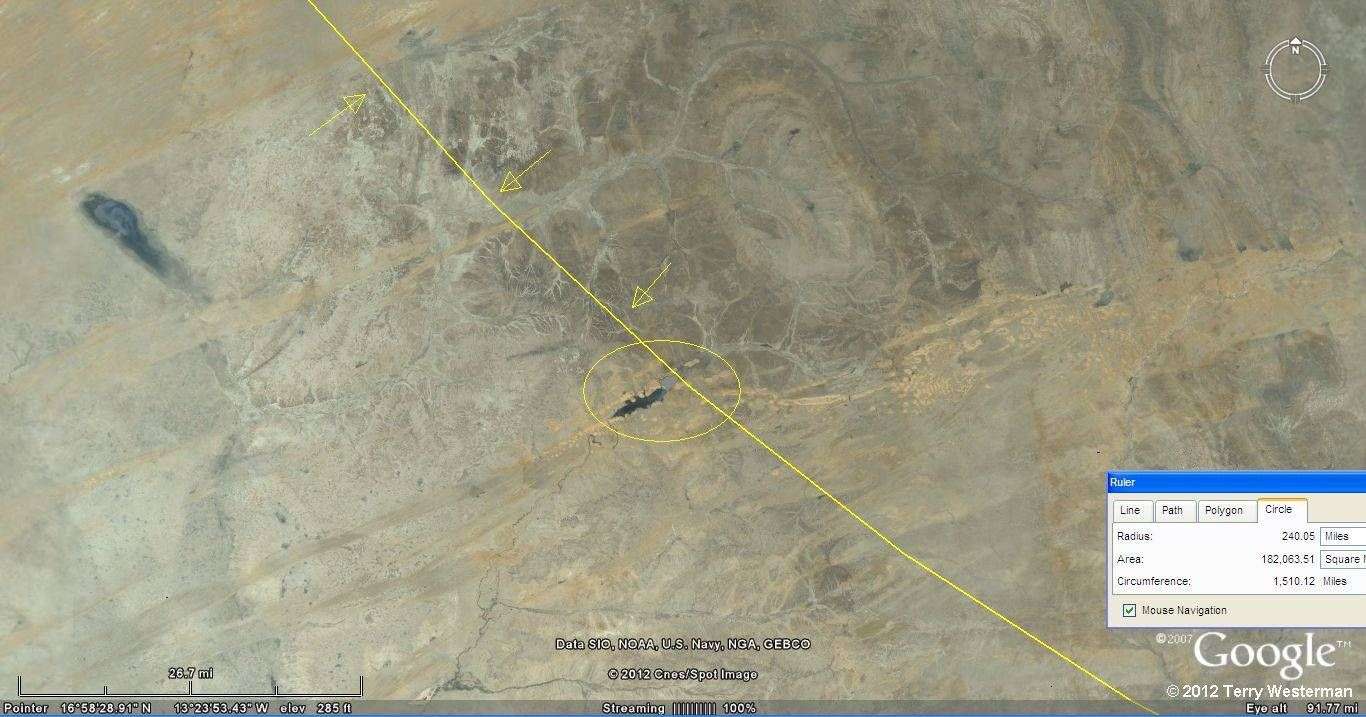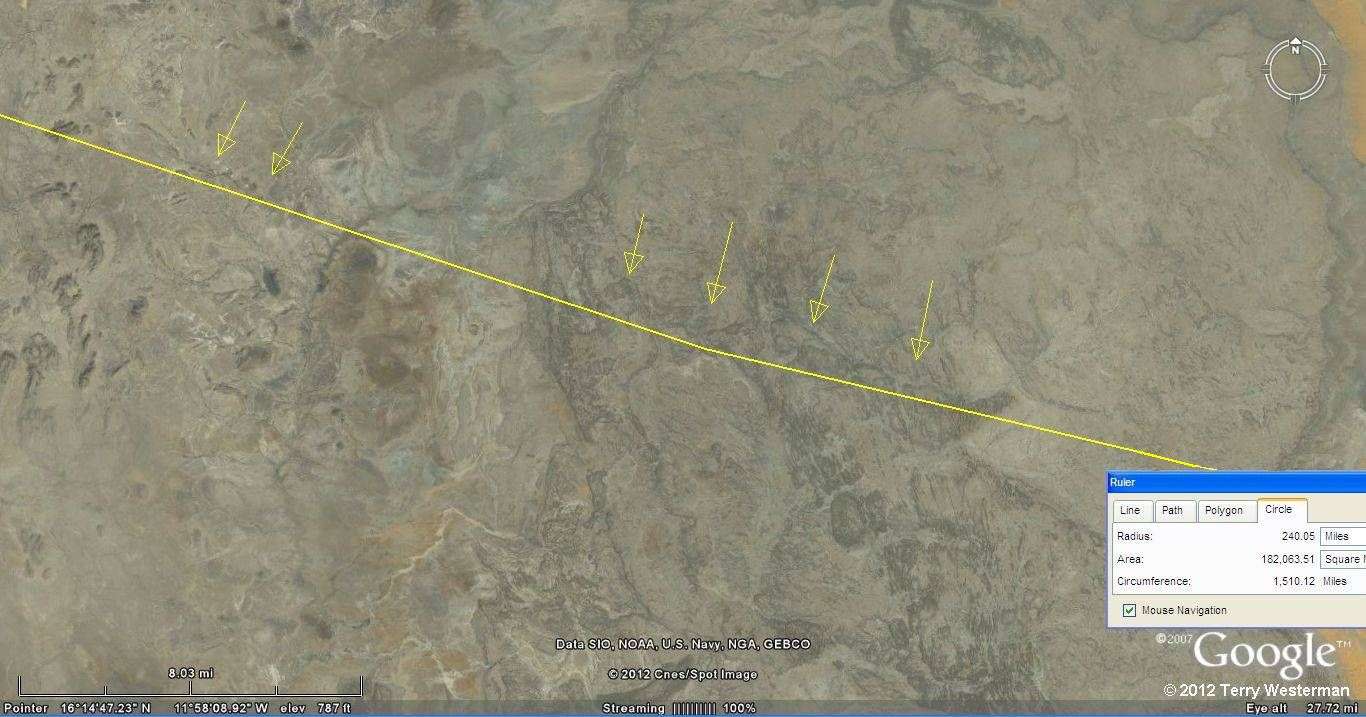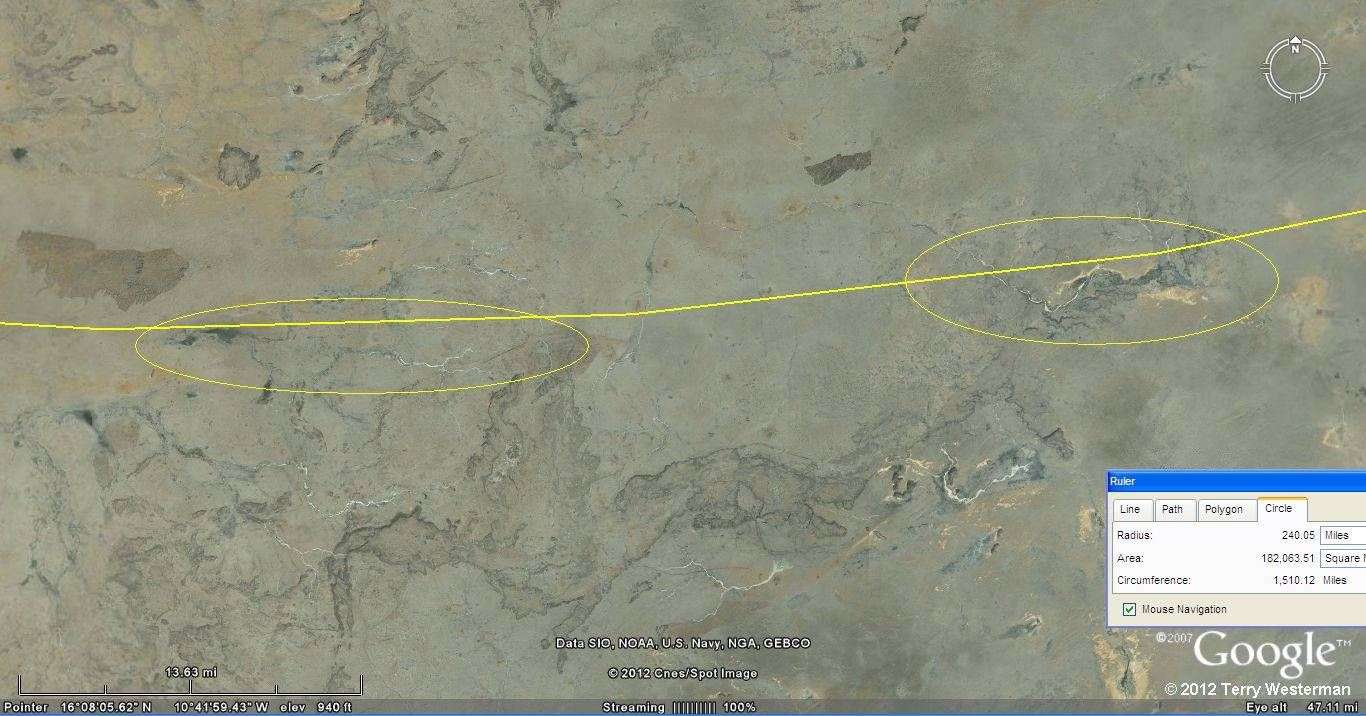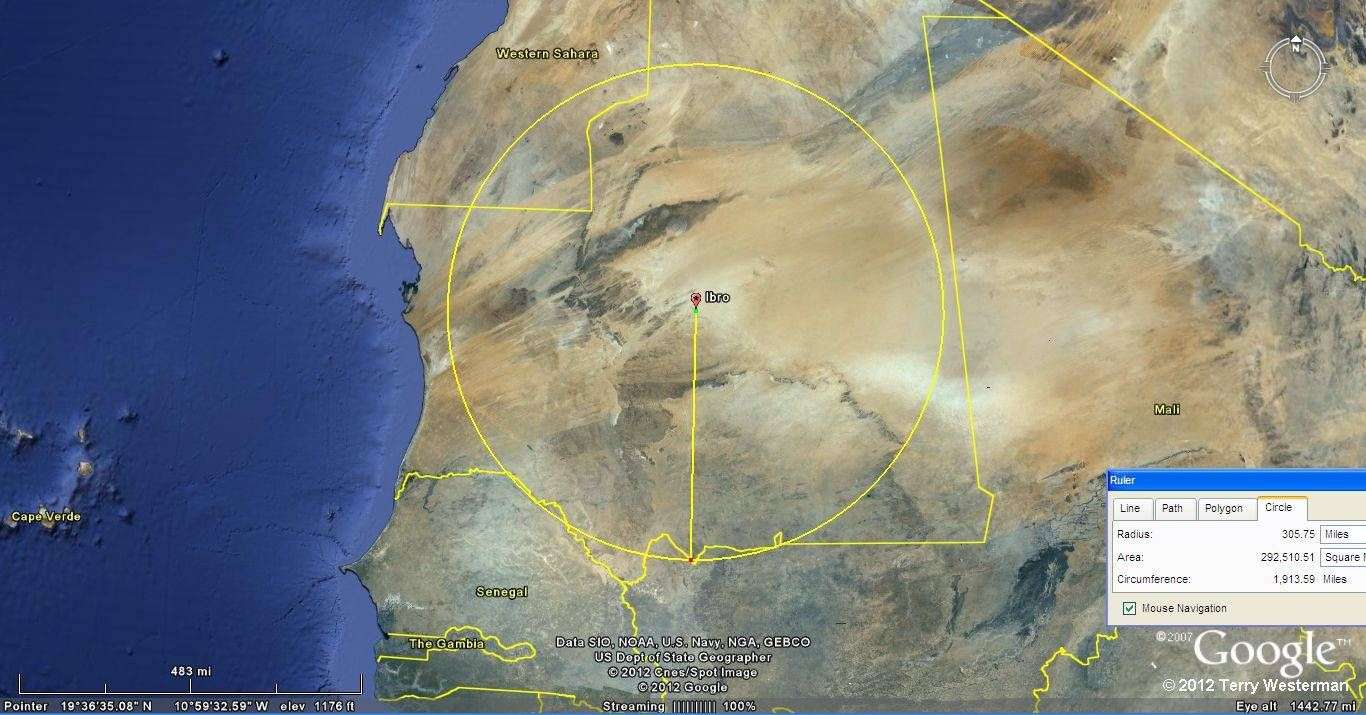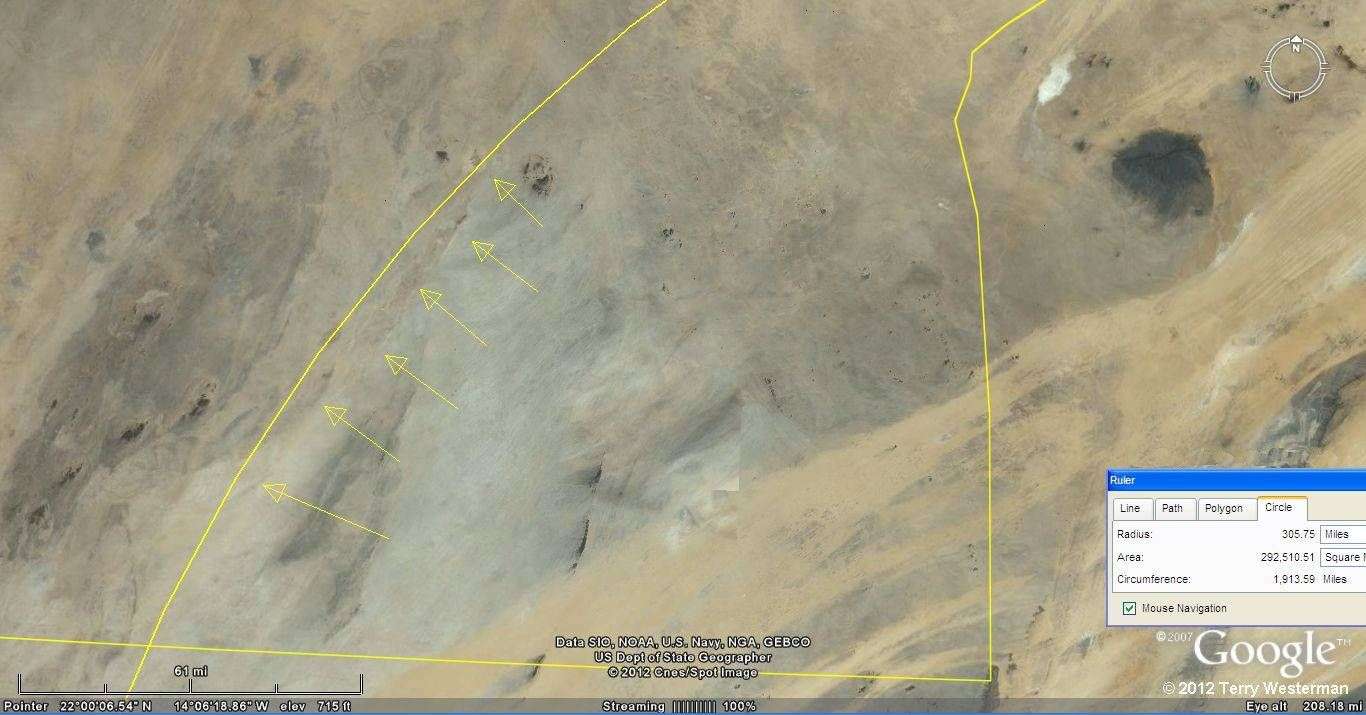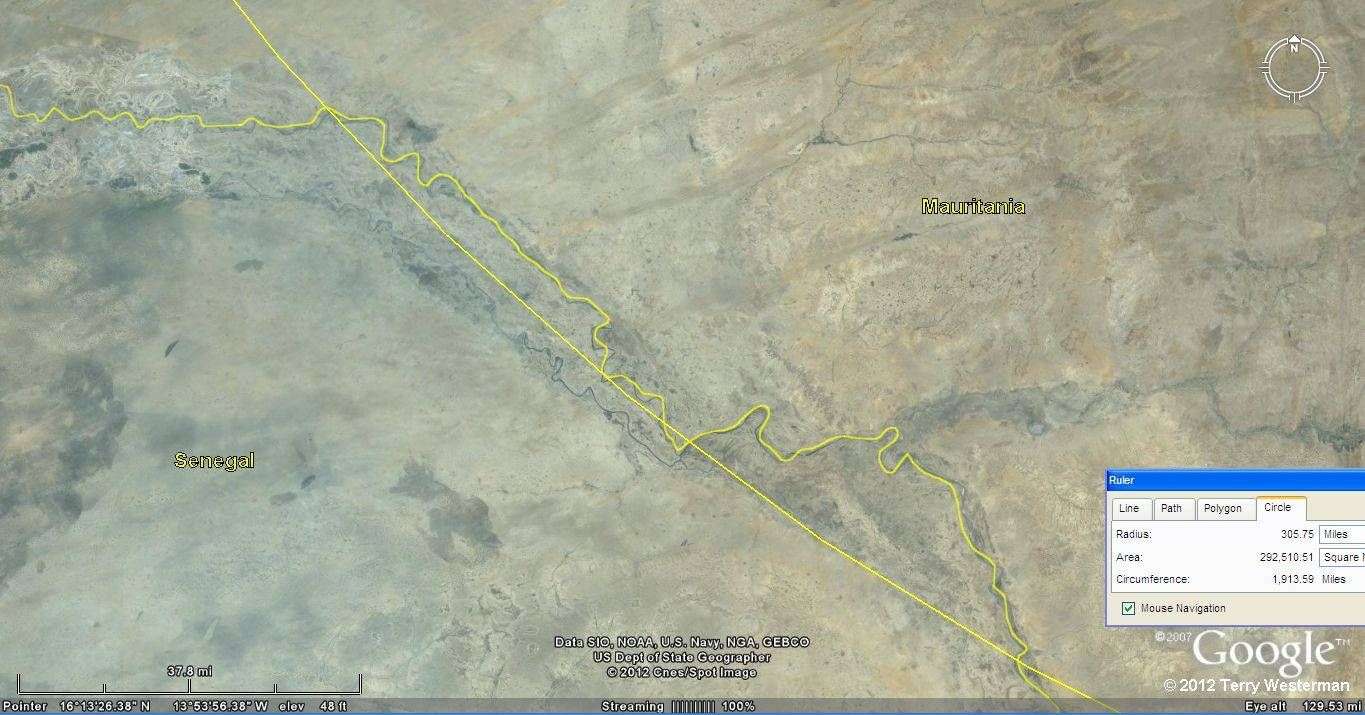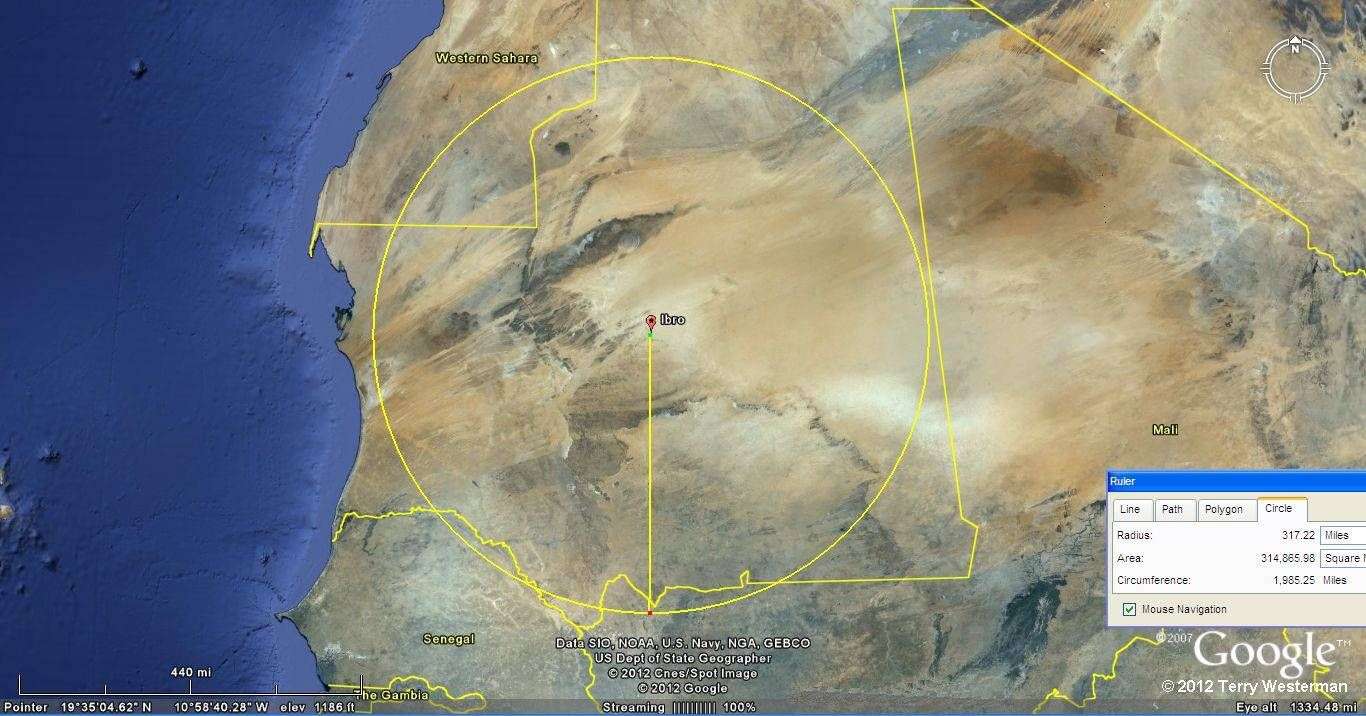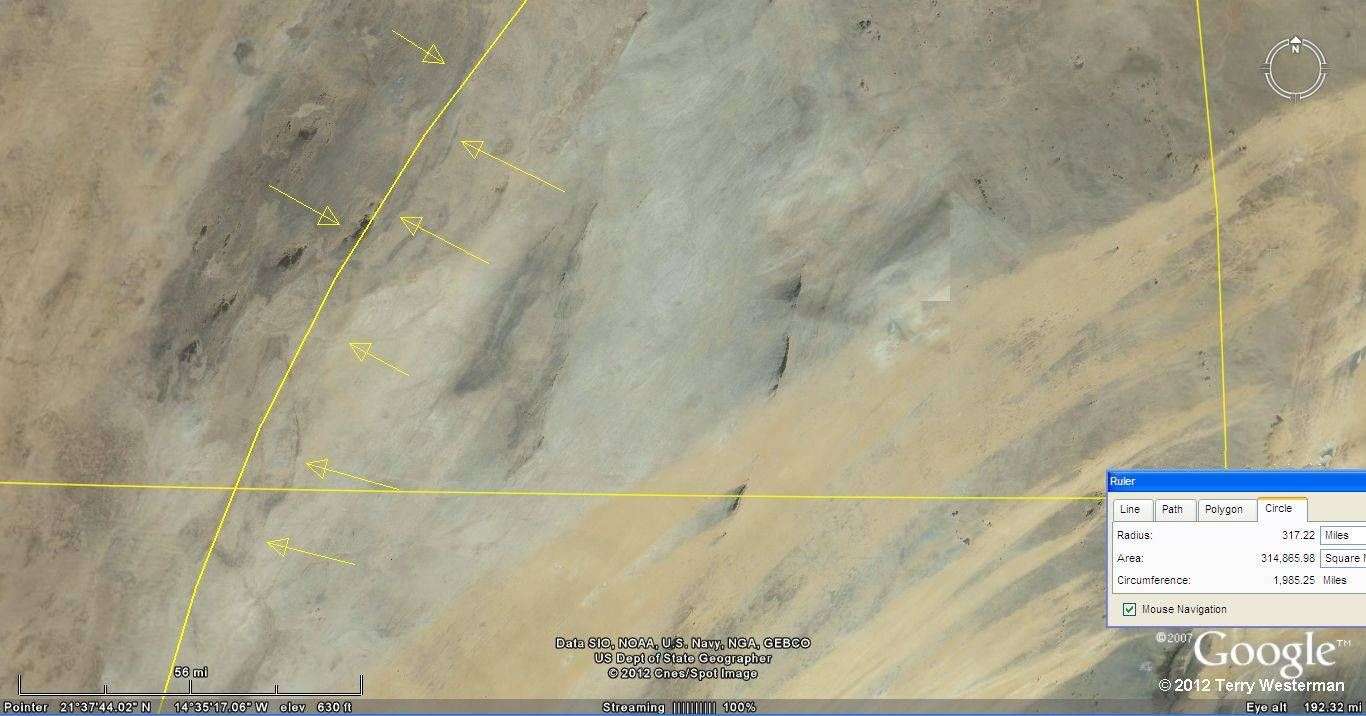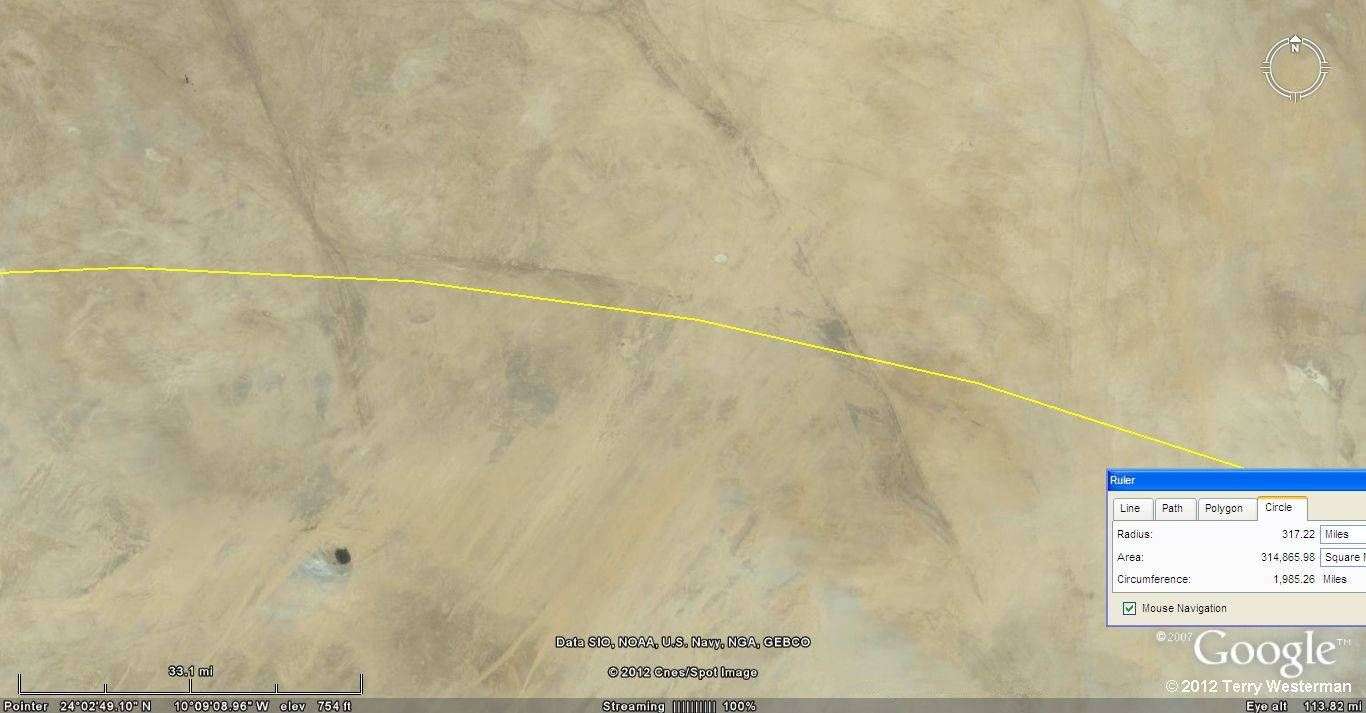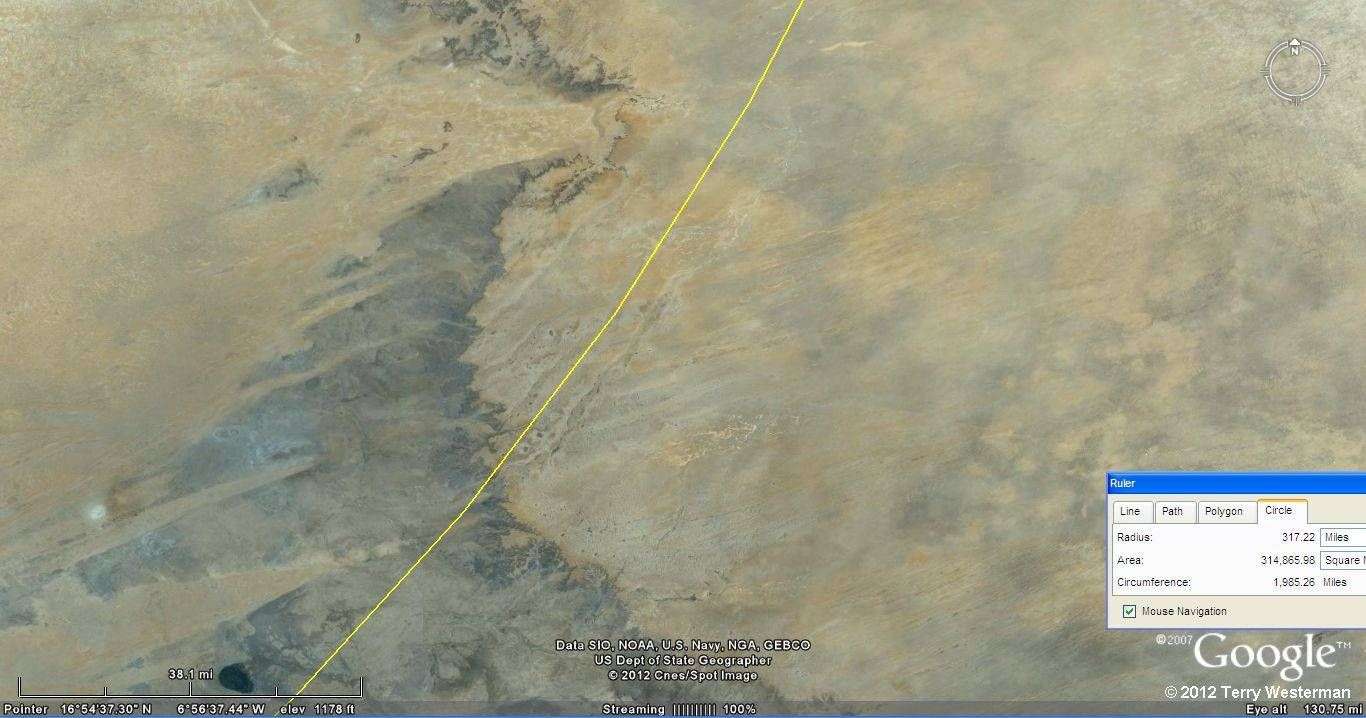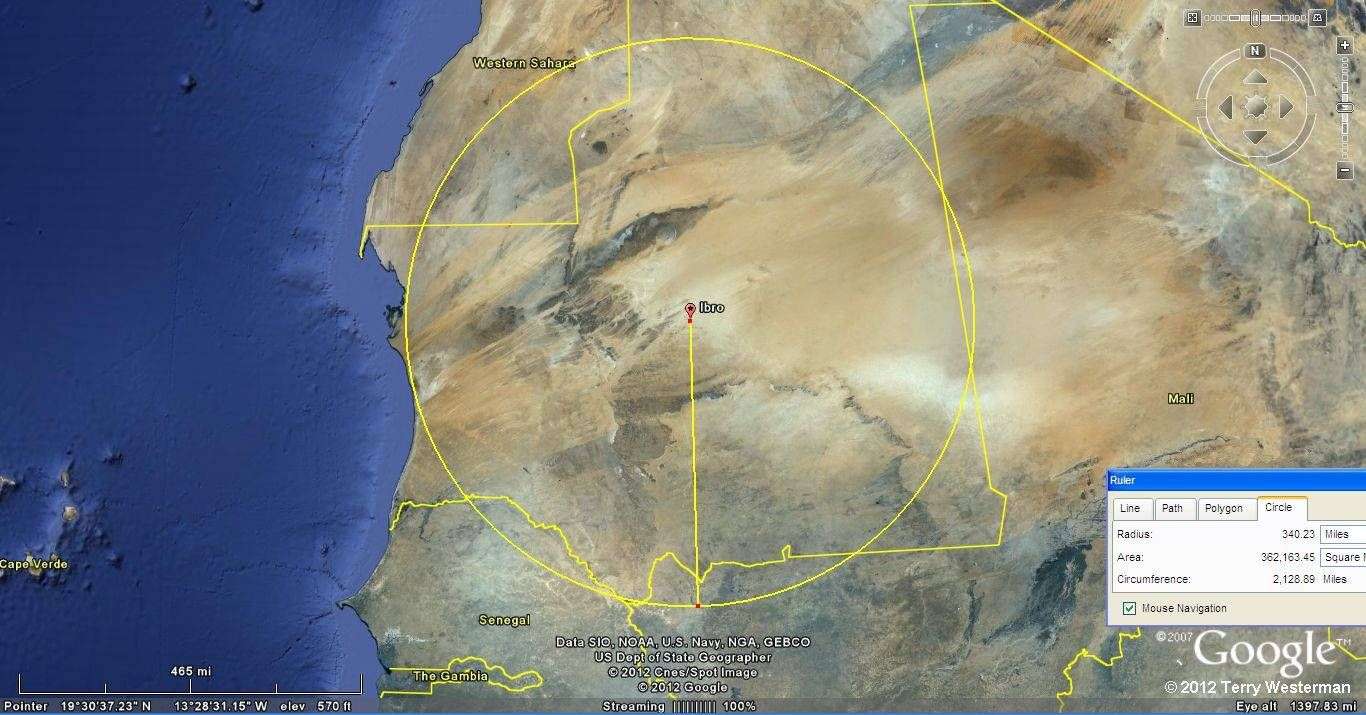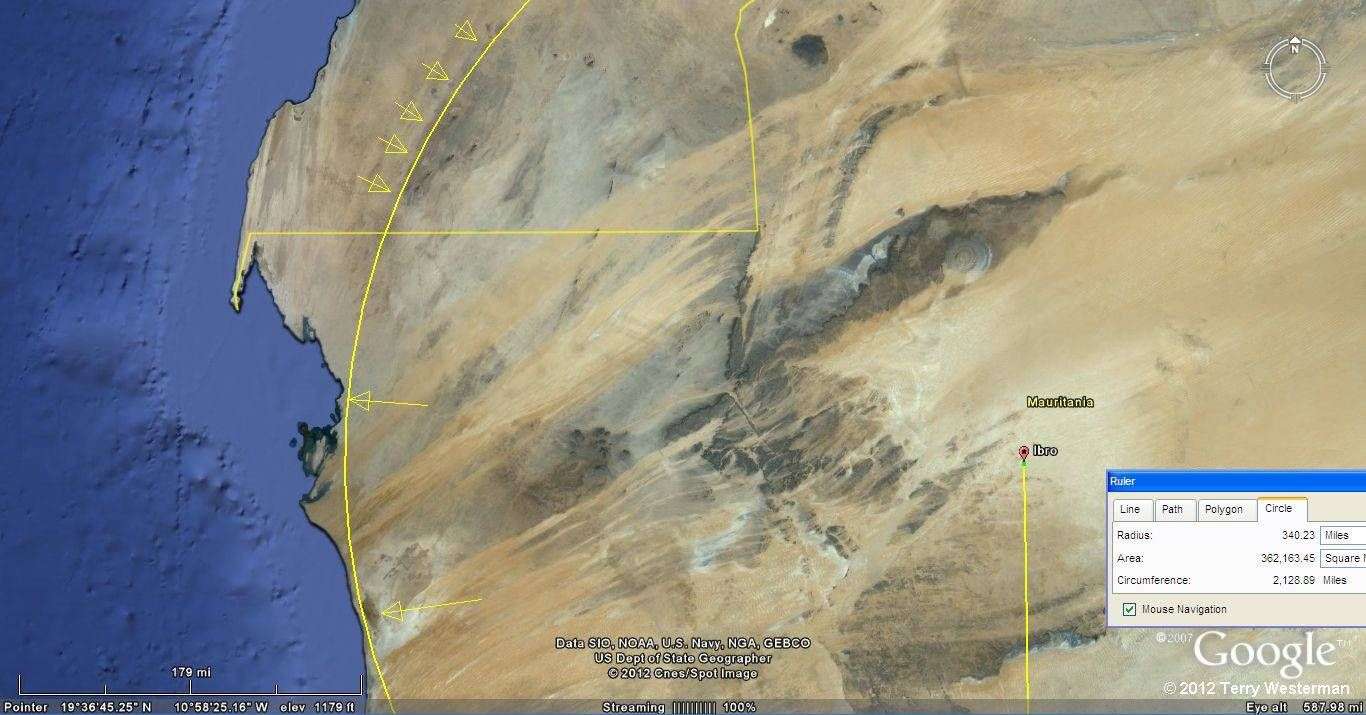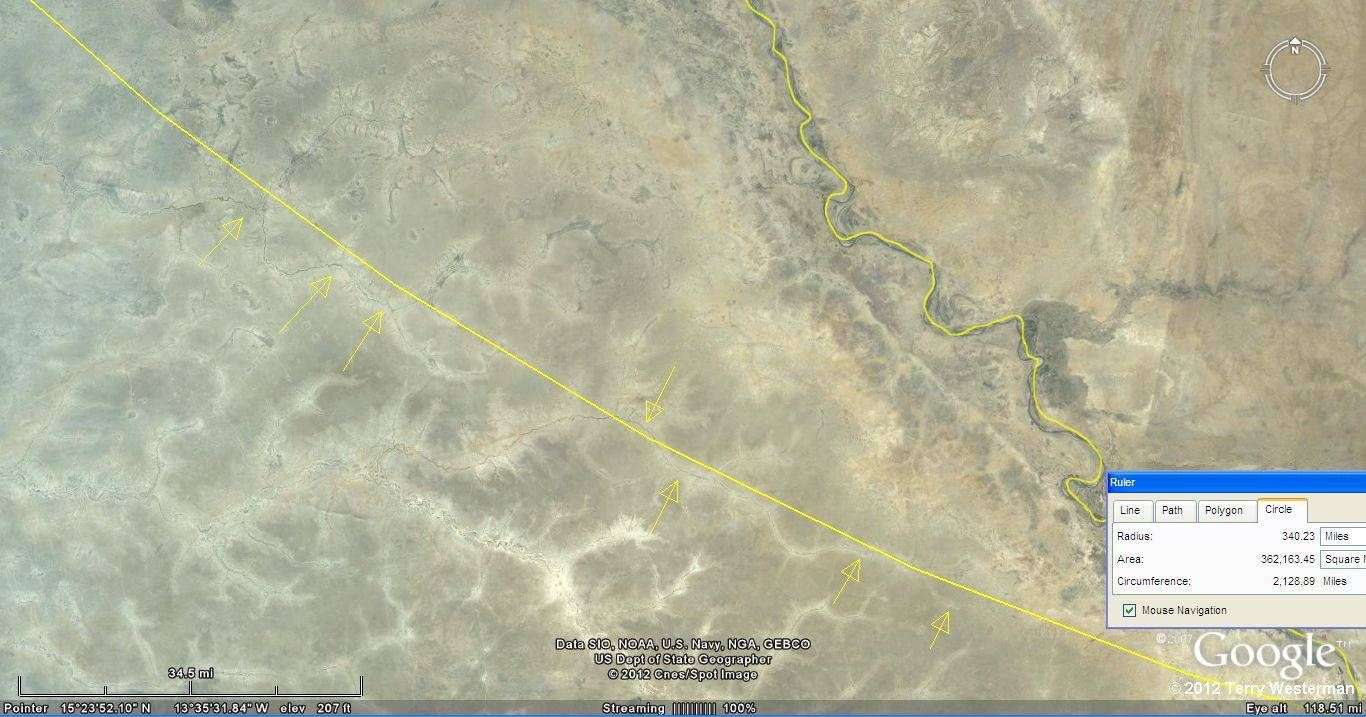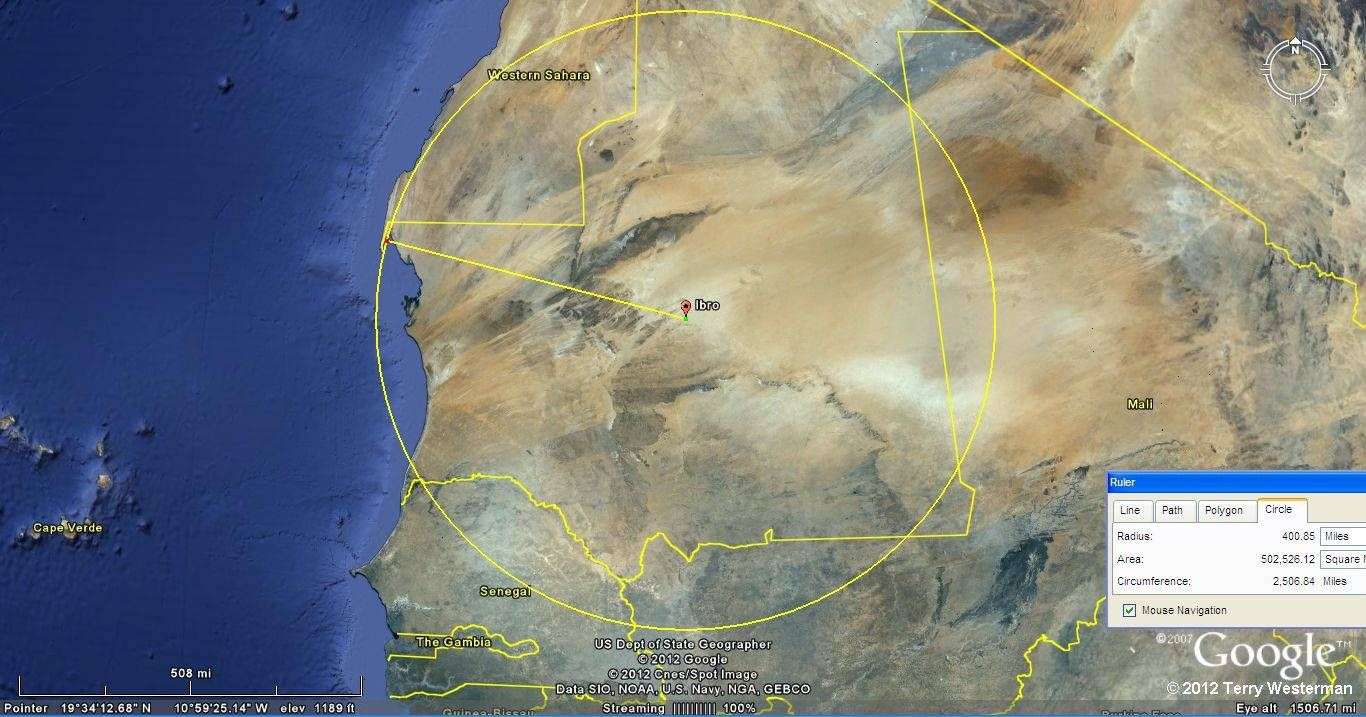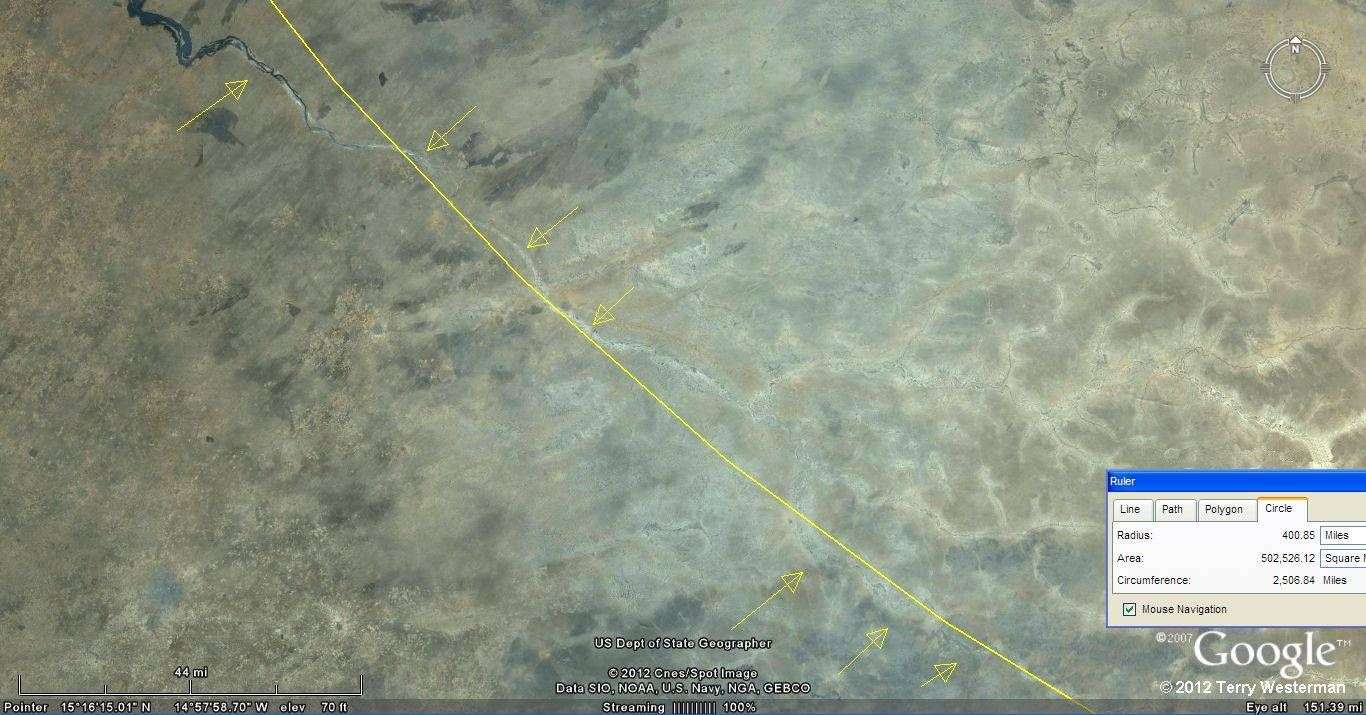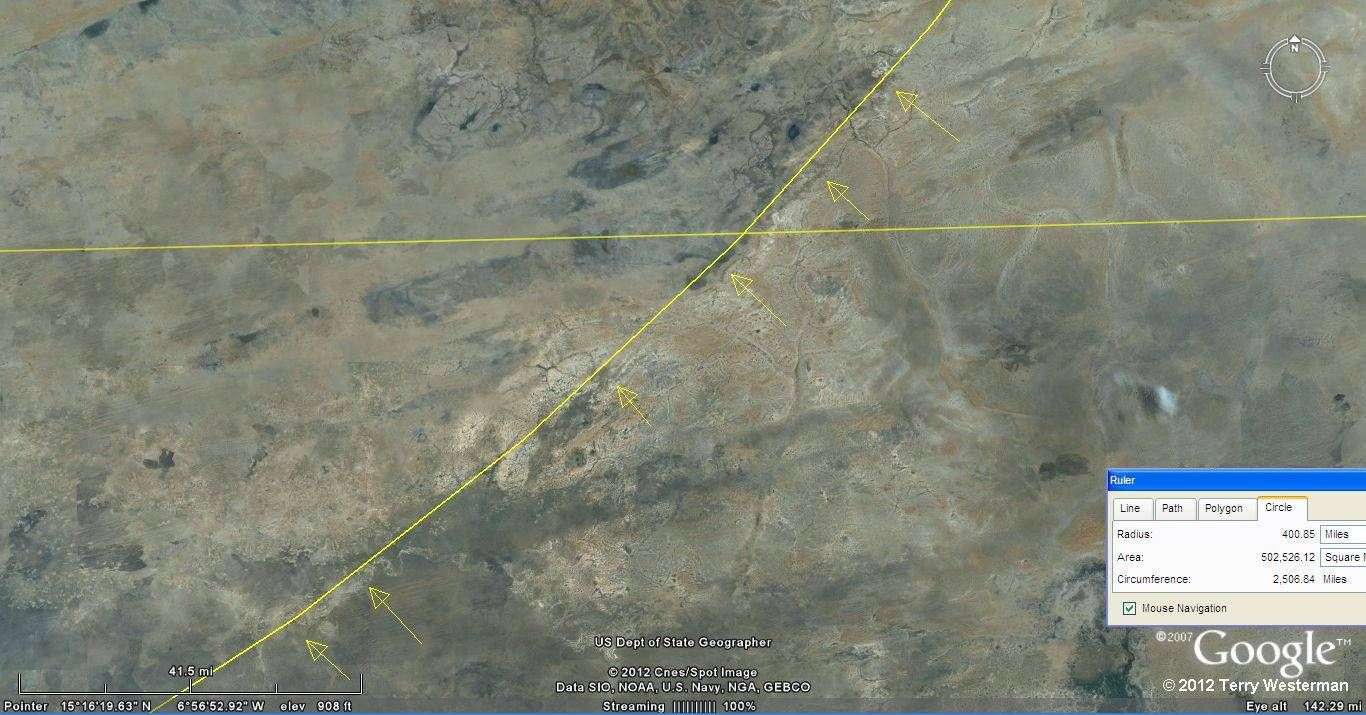Ibro, The Brow of the
Eye of the Sahara
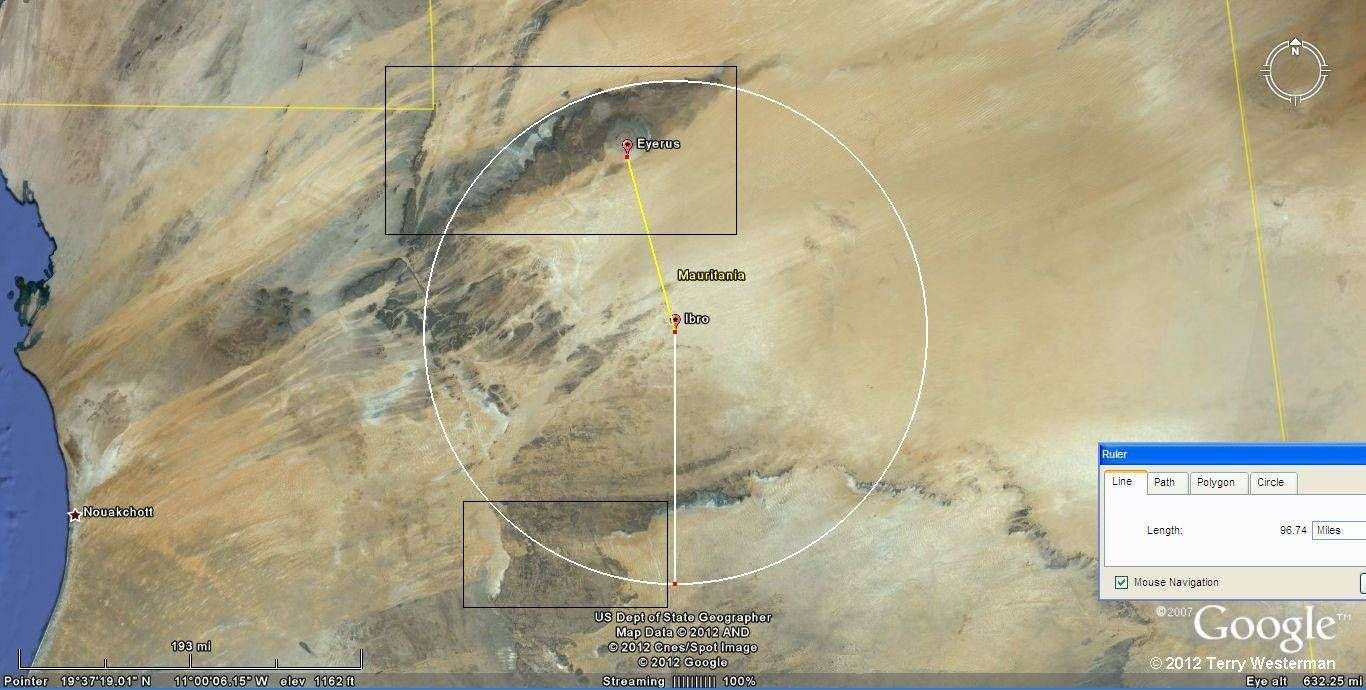
The brow of the Eye is the rim of
a crater of 135 miles radius.This center of impact is 97 miles to
the South southeast of the Eyerus Impact. There is no evidence of
the impact at the center, as time, the winds and sand have long
since covered it over. The evidence, again lies in the
surrounding geography.
The black
rectangles in the image above are detailed below.
|
|
|
|
|
|
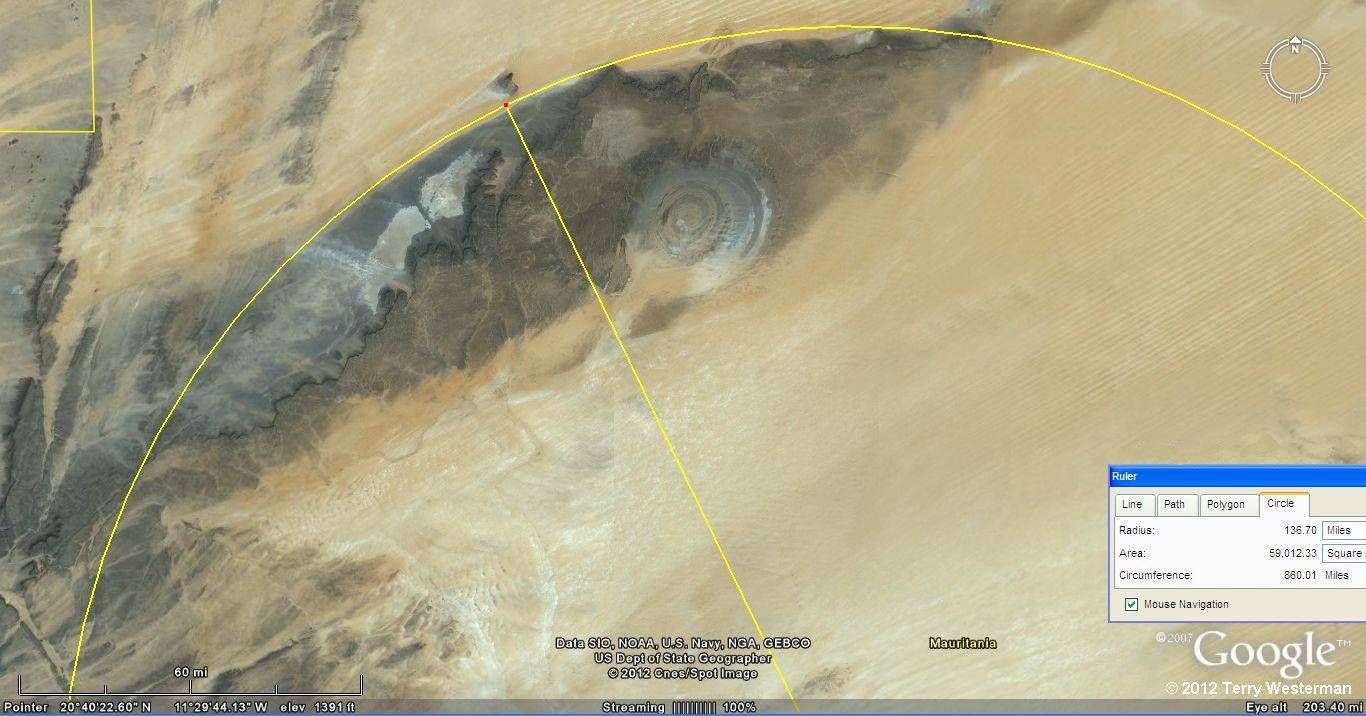
A closer view of the Ibro rim to
the North. This impact was probably from a loosely packed, comet
type of object, that contained a lot of material but was not that
fast moving. The reasoning behind this is that while this impact
raised a 900 feet high rim at 135 miles distance, and there is
evidence of numerous other shock waves out to 480 miles, this is
in steep comparison to the Eyerus impact, whose rim is only 15
miles in radius, but whose shock waves can be seen at 4,285 miles
and possibly beyond.

|
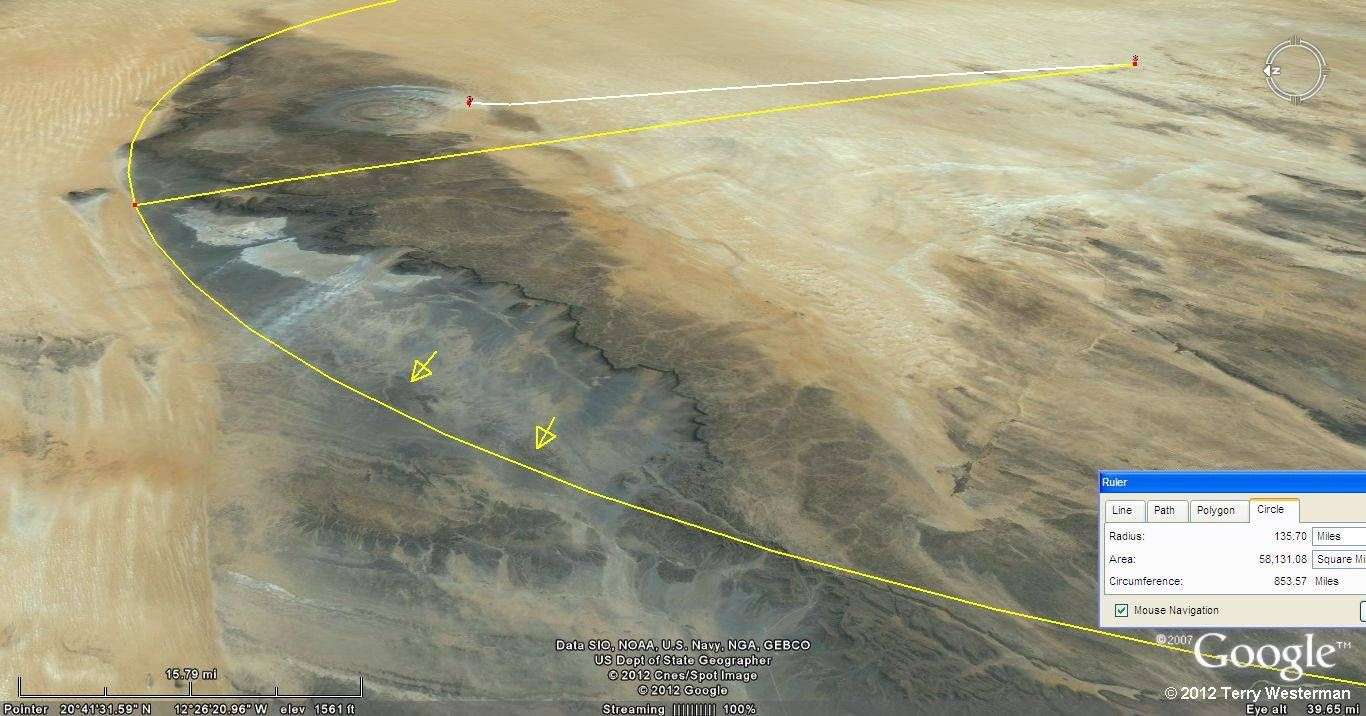
This image is of the
northern rim area, looking to the East. The rim at its maximum
appears to be about 2100 feet in elevation. The lakes at the
bottom of the cliffs are at about 835 feet elevation, about 400
feet below the sandy area to the left of the image. This part of
the rim is greatly eroded by the winds of time. The arrows show
parts of the original rim.
|

The winds here come from an
easterly direction. They move up over the rim, then down onto the
lake. Winds blowing like this create a slightly high pressure
area on the top surface of the rim, gently but continually
compressing it over millions of years. Then as it passes over the
top edge of the rim, the flowing air produces a semi-vacuum, a
low pressure area, under the top of the rim, on the face of the
cliffs. This low pressure allows the face of the cliffs to erode.
Then as the winds drop to the valley floor, they create a sharp
increase in pressure, due to the descending winds being forced to
change direction. These winds blew the sands away creating the
valley where water can accumulate. The warm winds then evaporate
that water to create the clouds which move across the valley.
|

|
|
|
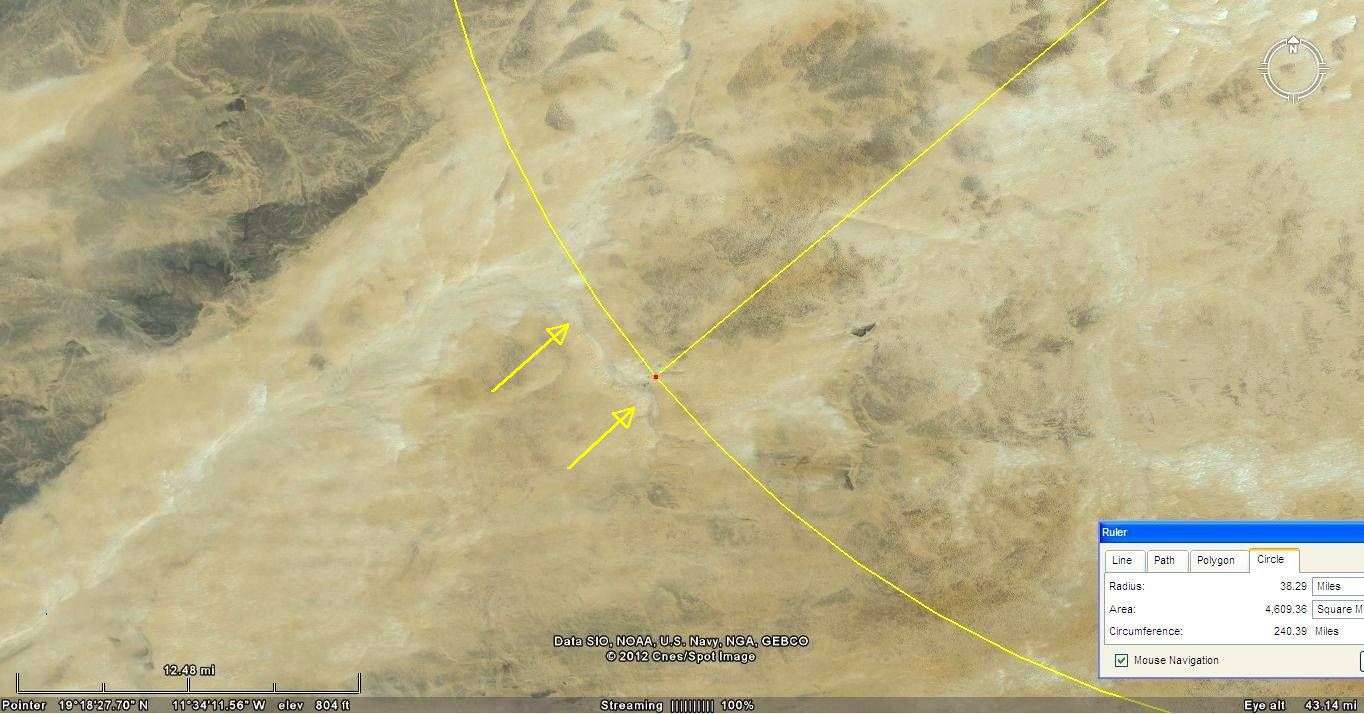
Closer in at 38 miles to the Southwest.

|
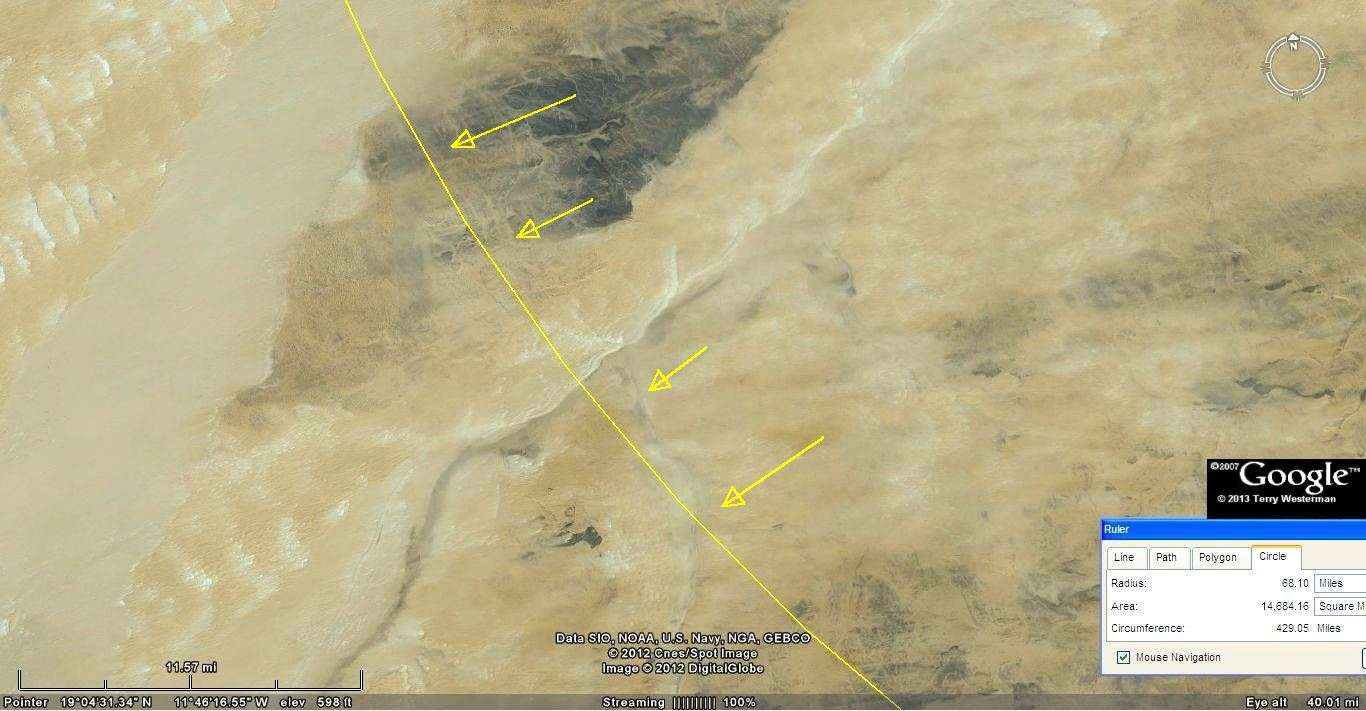
68SW
|

At 68 miles radius to the south, remnants of the wave. The
Eye has been estimated at 98 million years old. This structure
then would be older than that. The evidence of this impact has
survived that length of time in the blowing desert sands.
|

|
|
|
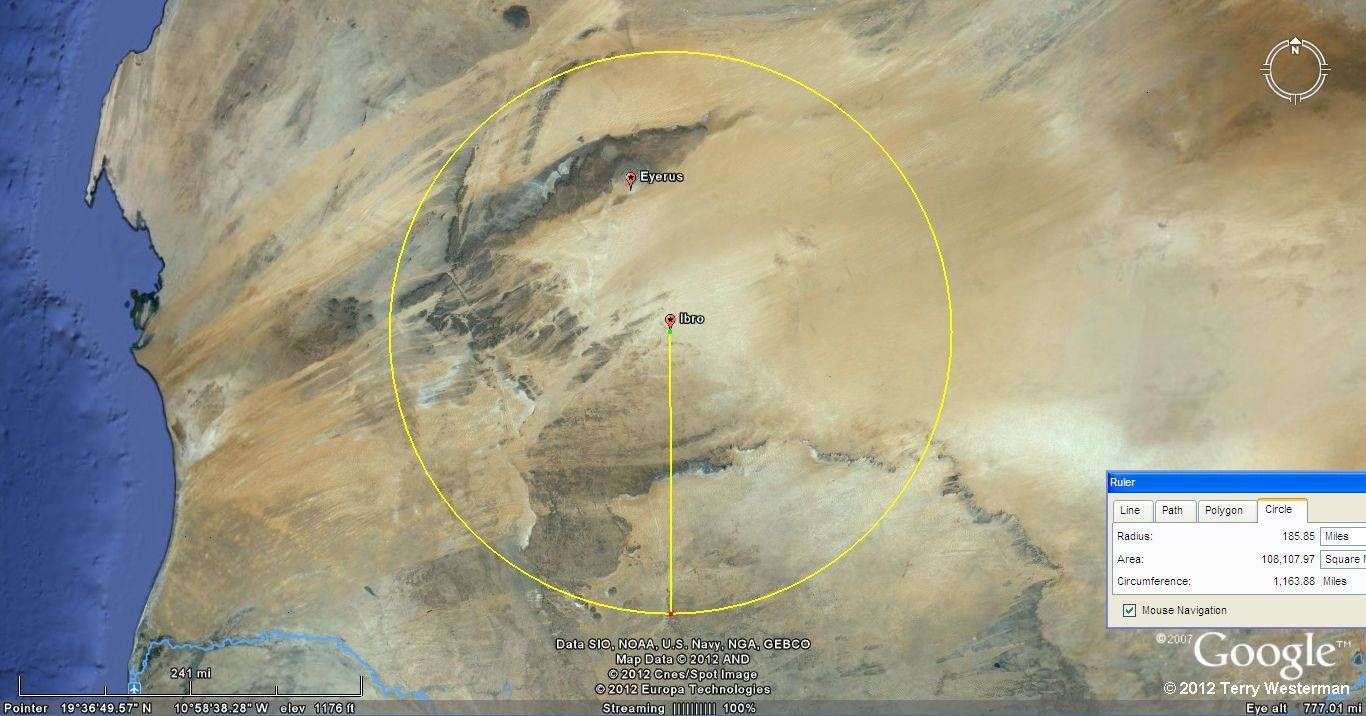
At 185 miles radius, the circle is formed primarily to the
North and West.

|
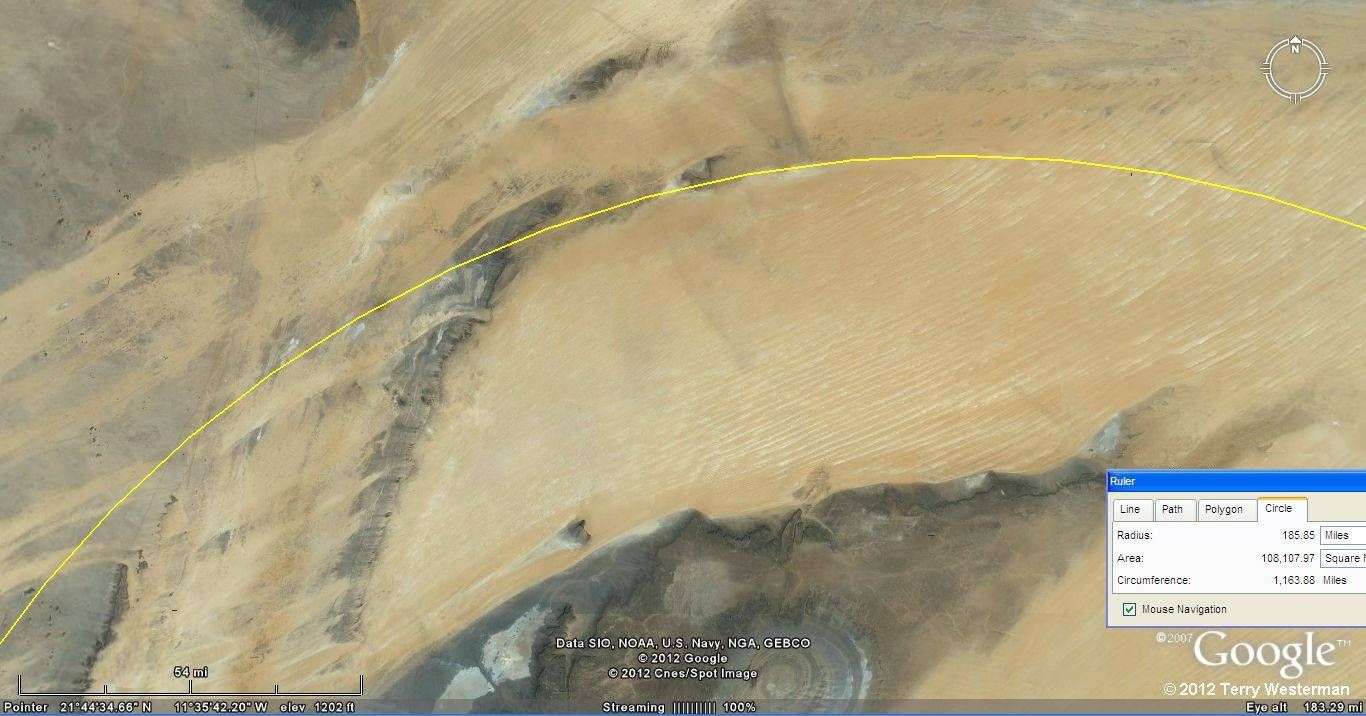
At 185 miles radius to the North.
|
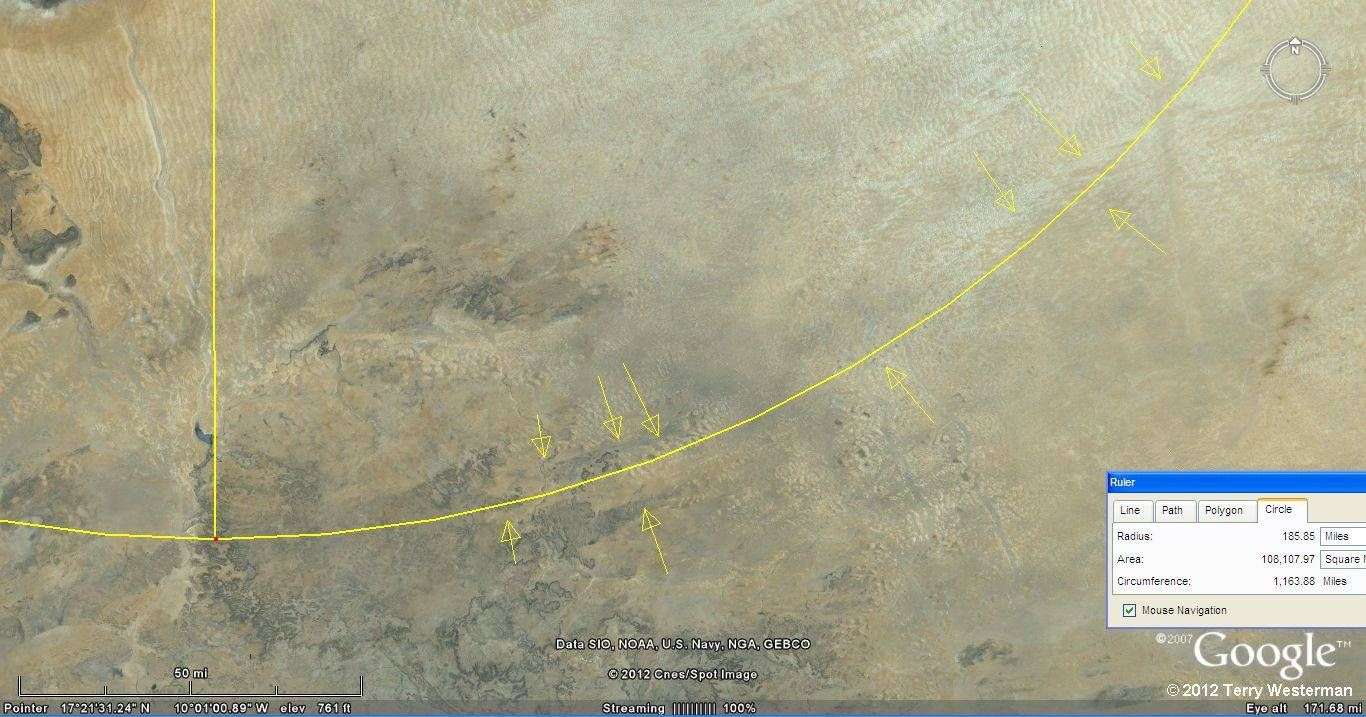
At 185 miles radius to the South.
|

|
|
|





